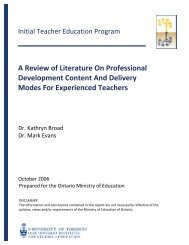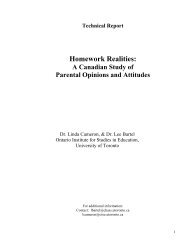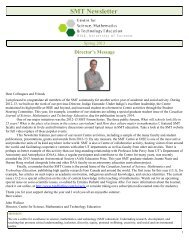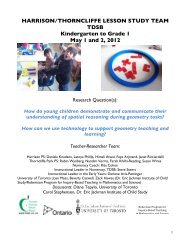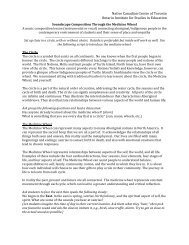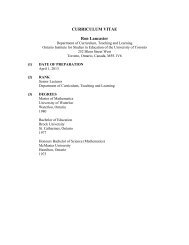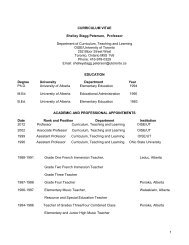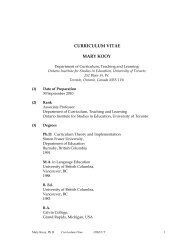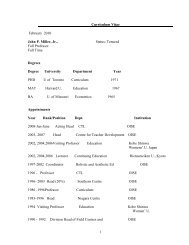The Ontario Curriculum, Grades 9-12 - Ministère de l'éducation ...
The Ontario Curriculum, Grades 9-12 - Ministère de l'éducation ...
The Ontario Curriculum, Grades 9-12 - Ministère de l'éducation ...
You also want an ePaper? Increase the reach of your titles
YUMPU automatically turns print PDFs into web optimized ePapers that Google loves.
diseases (e.g., cardiovascular disease, diabetes, asthma), and environmental factors (e.g.,<br />
climate change, air pollution, chemical pollutants, radiation)<br />
E3.4 explain a variety of social factors that can promote the rapid spread of infectious diseases<br />
(e.g., global population growth, international travel, poor sanitation, lack of clean<br />
drinking water)<br />
F. Biotechnology<br />
F1. Relating Science to Technology, Society, and the Environment<br />
F1. analyse a variety of social, ethical, and legal issues related to applications of<br />
biotechnology in the health, agricultural, or environmental sector<br />
F1.1 analyse social issues related to an application of biotechnology in the health, agricultural,<br />
or environmental sector (e.g., issues related to the uses of genetically modified<br />
organisms …) [AI, C]<br />
Sample issue: <strong>The</strong> promise of genetically modified (GM) crops was that they would<br />
be resistant to pests and would produce more abundant harvests. However, GM crops<br />
can crossbreed with crops in adjoining fields, thus contaminating traditional food<br />
sources, reducing biodiversity, changing farming practices, and limiting the choices<br />
available to consumers.<br />
F1.2 analyse, on the basis of research, ethical and legal issues related to an application of<br />
biotechnology in the health, agricultural, or environmental sector … [IP, PR, AI, C]<br />
Sample questions: … Who <strong>de</strong>termines whether genetically modified foods are safe? How<br />
might the testing/regulation process be open to abuse? What are the legal and ethical<br />
implications of introducing into an ecosystem a species engineered through biotechnology?<br />
F3. Un<strong>de</strong>rstanding Basic Concepts<br />
F3. <strong>de</strong>monstrate an un<strong>de</strong>rstanding of biological processes related to biotechnology and of<br />
applications of biotechnology in the health, agricultural, and environmental sectors<br />
F3.3 <strong>de</strong>scribe applications of biotechnology in the health (e.g., genomics, gene therapy,<br />
xenotransplantation, in vitro fertilization), agricultural (e.g., genetically modified crops,<br />
biopestici<strong>de</strong>s, cloning), and environmental sectors (e.g., bioremediation,<br />
phytoremediation)<br />
Science, Gra<strong>de</strong> <strong>12</strong>, Workplace Preparation (SNC4E)<br />
B. Hazards in the Workplace<br />
B1. Relating Science to Technology, Society, and the Environment<br />
B1. assess common workplace settings with respect to hazards, and analyse selected<br />
legislation that is in place to protect workers and the environment from these hazards<br />
B1.1 assess a workplace setting, either real or simulated, with respect to hazards that could<br />
affect workers or the environment, using appropriate criteria (e.g., a checklist for a health<br />
and safety audit) [AI, C]<br />
Science 153



